Originally published at: Factor’s Updated Slick - Slowtwitch News
Considering a new tri bike? If so, there’s a 50 percent chance you’ve limited your search to Canyon or Cervelo, simply based on what you tell us when we ask. If you go back to when this site began publishing (1999), these favored brands weren’t contenders, and now they dominate the tri bike market. That’s how things change. Are we getting ready to change again? The answer is yes (certainly design changes, if not brand changes), for reasons described below.
Factor launched a new tri bike last month and I don’t think the intention is for it to (yet) rival the P5 or the Speedmax. This is only the second iteration of the Slick, so this brand has just begun to fight in the tri space. Also, it does not enjoy a breadth of models across the price spectrum and this is a must if you want to sell in volume.
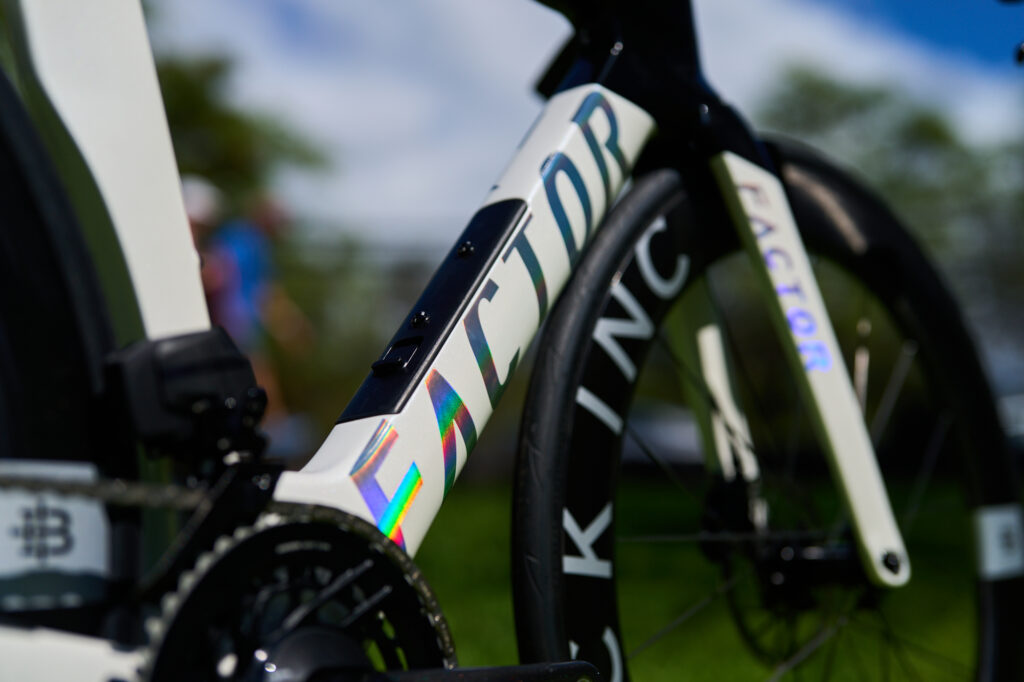
Still, the Factor Slick commands attention because of what it is and because of who is behind it. The “who” is Rob Gitelis, with whom I’ve had business dealings as a bike maker going back to 1995. He has had his own factories in Asia for most of that time and absolutely knows his way around. The head designer for Factor is Graham Shrive, who had that job at Cervelo during the post-Vroomen/White era. He didn’t just help Cervelo keep the doors open; he continued to move the brand forward with insightful design ideas. Then there’s one particular investor in Factor – Chris Froome – who was not just the world’s best cyclist in his era, but was an innovator in riding technique, notably in cadence and in descending.
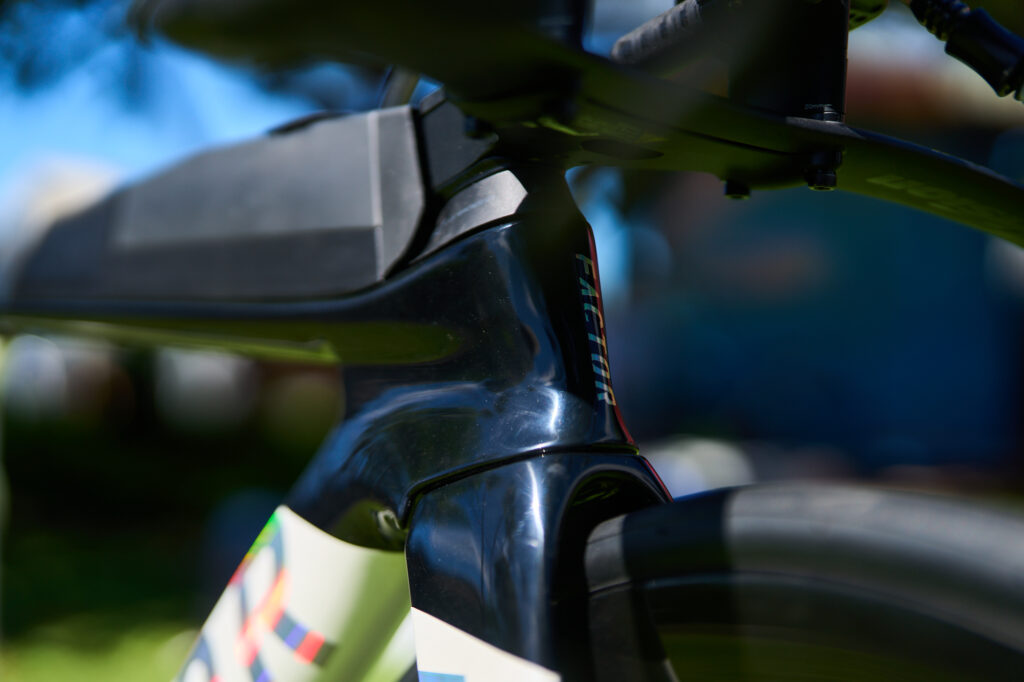
What is the Slick? Think if it as Factor’s version of Cervelo’s P5D and I don’t think that’s an unfair statement for these reasons. First, it’s a World Tour TT bike dolled up with tri accessories and, if you think about Cervelo’s history over the past dozen years, that’s clearly what you all want. The Cervelo P3X was the bike specifically made by Cervelo for your use case if you’re an IRONMAN-style racer. Most of you chose the more conventional-looking bike. Why would Factor make an unconventional design when the last bike to do that successfully was Softride in the 1990s?
From a design motif, Cervelo’s experience has been instructive. Shrive was engineering project manager, and then head of engineering, at Cervelo from 2012 through 2019, formative years for the P5. It stands to reason he brought what he knew over to the Slick.

On the subject of geometry, here is the conundrum we all face today. The bike positions of the top triathlon pros have subtly changed over the last half-decade and, by my observation, the changes follow equipment. A full forearm rest serves as both a comfort feature and an aerodynamic advantage when it acts as a fairing. The rider hides behind the aerobar and this allows the bar to sit higher and tilt up. Some riders also appear to be sliding a bit forward into a pretty extreme hip position. The original tri bike, in 1989, did not invent a position; it placed a bike and a geometry where riders were already riding. The bike was “built from the bars back.”
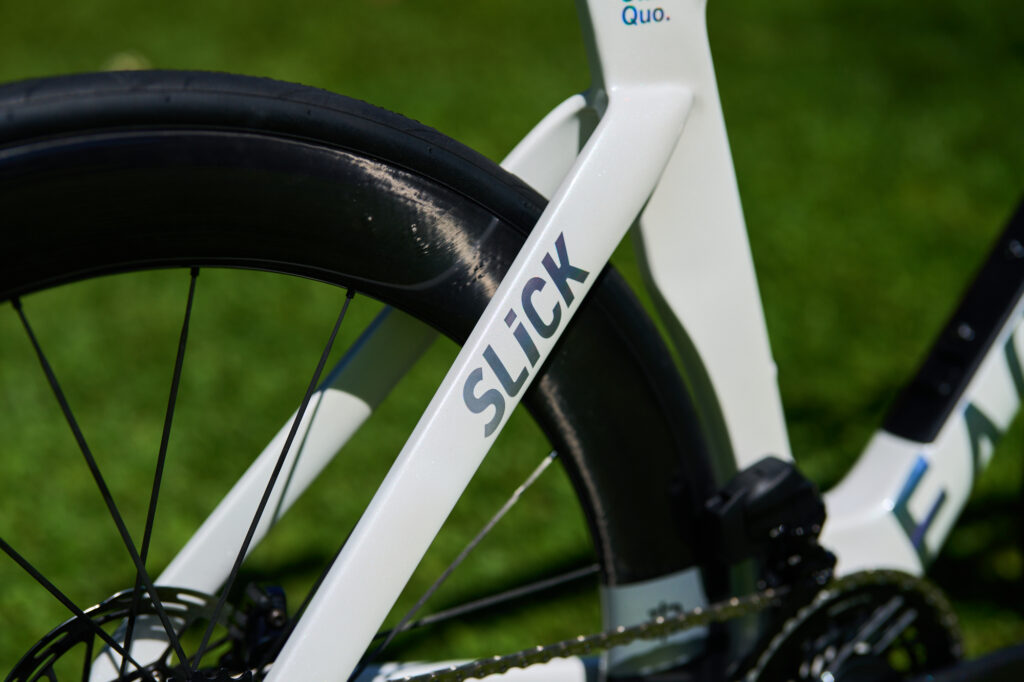
Have we again reached a place where the bike geometry must be reimagined if these new aerobar styles inform a change in the way riders sit aboard their bikes? If what you need is a longer front center, and a higher aerobar, could you not just buy an existing tri bike in the next size up? Sure, if your position is dictated by the aerobar you use, and the bike underneath that aerobar happens to be a typical tri bike in a larger size.
Anyway, the conundrum for Factor and for Cervelo and all the brands like these is: tri bike geometries have not yet changed to match the positions dictated by these new aerobars; and the bikes built today generally don’t come spec’d with these bars. They are aftermarket purchases. It’s no different with the Factor Slick. You might even say that the OE aerobar is often a placeholder on bikes like the Slick that sell for $9,000 or more, because a purchase of this magnitude is destined to have a boutique, full-forearm armrest placed on it. So, which size do you buy? The size for the stock aerobar or the size that anticipates the use of an aftermarket bar you raise up and hide behind?
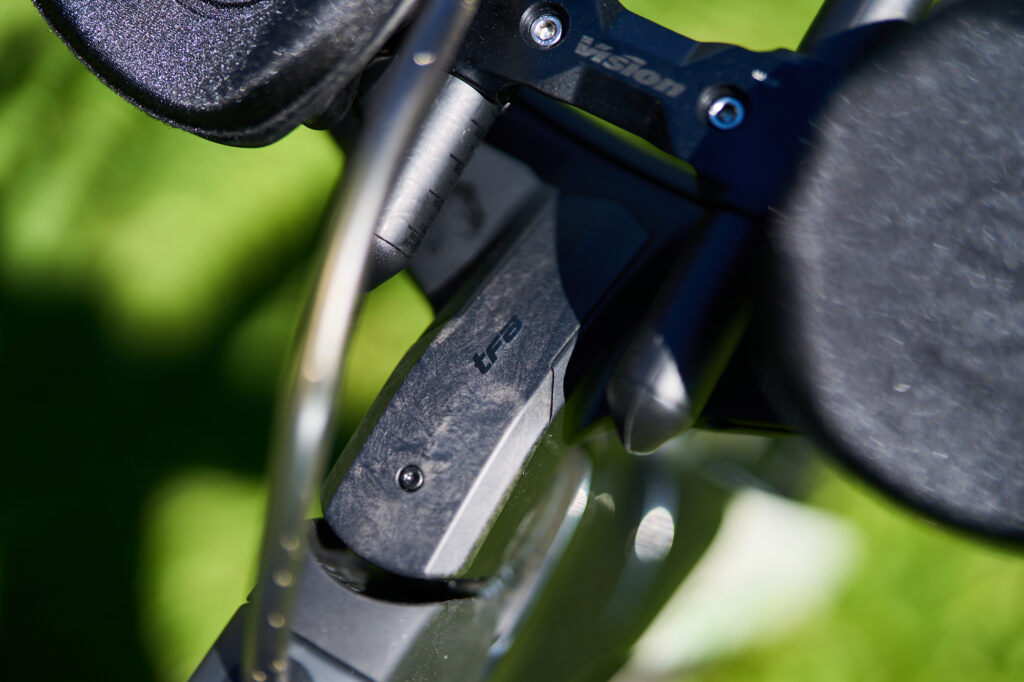
Bikes like Cervelo’s P5, and the Factor Slick – and Trek’s Speed Concept and so many other bikes – are hamstrung by their dual use cases. Aerobars and positions not necessarily legal in professional cycling are fully legal in tri. Fortunately, the Slick is designed with a standard round steerer that will accept just about any bar, because its designers knew that the bar on the bike is likely to be replaced. However the Slick is shipped with the Vision Metron TFA aerobar and, in my opinion, it’s too much bar – too much money for a bar – that isn’t full forearm. I’d rather see the bike shipped with a Drag 2 Zero or Sync or Aerocoach, or just outfit the Slick with the a cheap aerobar that everyone knows is going to be replaced.
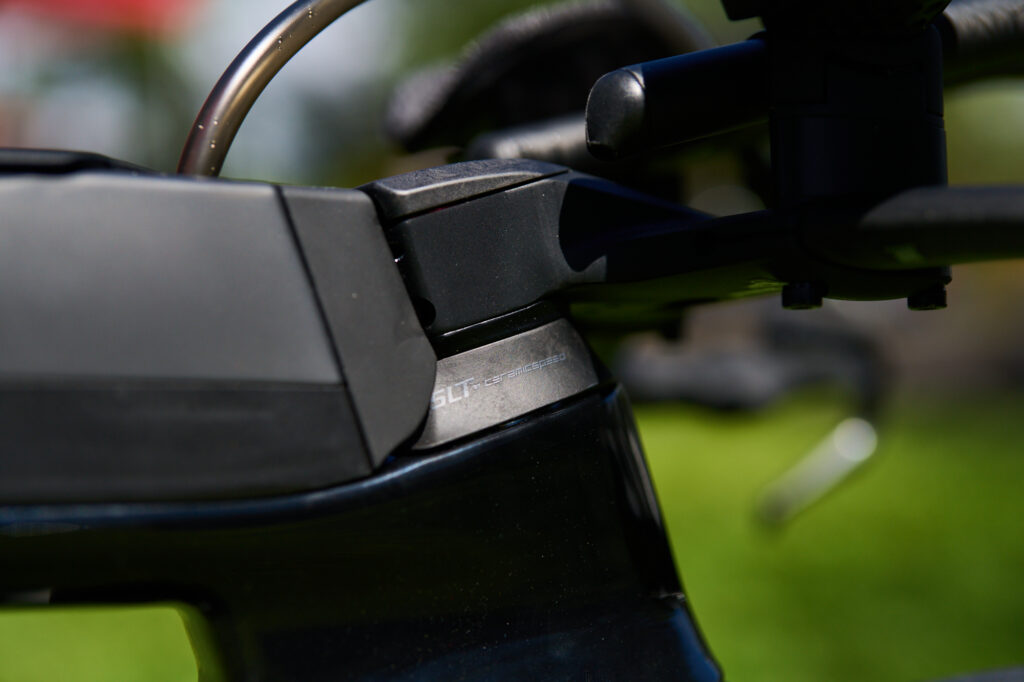
The rest of the Slick’s details borrow from the work Shrive put into the Cervelos he made, such as generous top tube storage and hydration and additional down tube storage. It’s a well-designed and well-conceived bike served to you from an august design team that is, in every sense of the word, factory direct (not just a sales channel, but a fully-integrated, fully vertical “farm to table” bike brand).
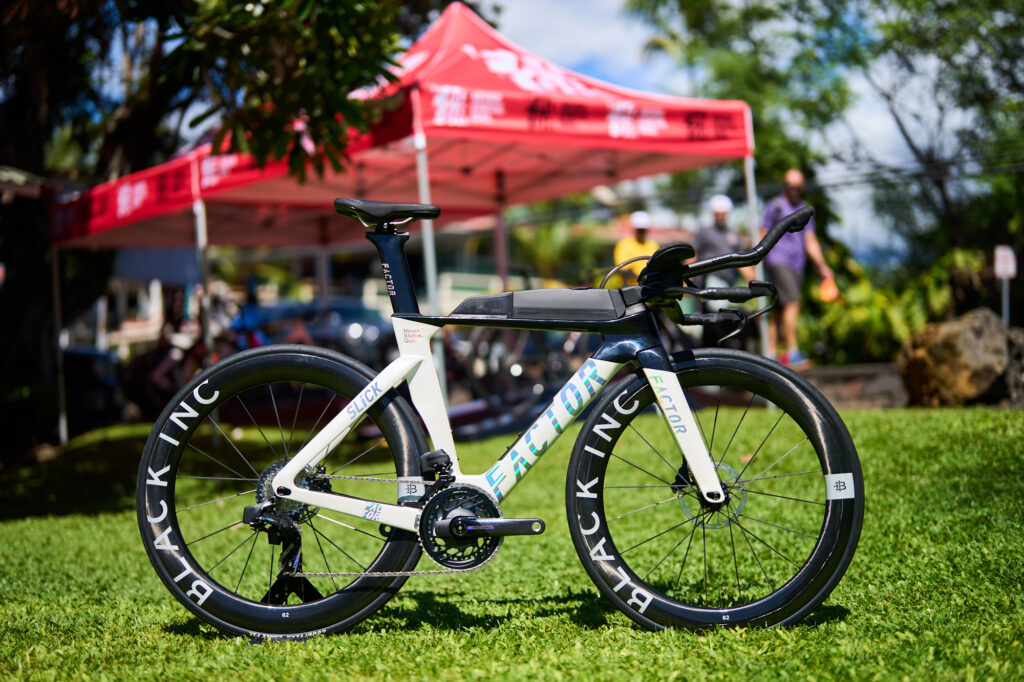
The Slick will sell complete for US $9,200 or $10,400, and that’s with SRAM Force or RED equipped respectively (AXS electronic in each case). For only $1,200 more I’d take the RED because that groupset is a new design and its features (such as improved front derailleur shifting) haven’t yet flowed down to the other groupsets.